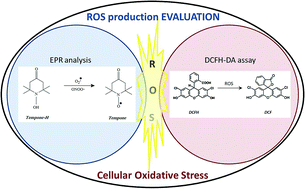Titania (TiO2) nanoparticles were surface modified using silica and citrate to implement a ‘safe-by-design’ approach for managing potential toxicity of titania nanoparticles by controlling surface redox reactivity. DLS and zeta-potential analyses confirmed the surface modification, and electron microscopy and surface area measurements demonstrated nanoscale dimensions of the particles. Electron paramagnetic resonance (EPR) was used to determine the exogenous generation of reactive oxygen species (ROS). All the produced spray dried nanotitania lowered levels of ROS when compared to the corresponding dispersed nanotitania, suggesting that the spray drying process is an appropriate design strategy for the control of nano TiO2 ROS reactivity. The modification of nanotitania with silica and with citrate resulted in increased levels of ROS generation in exogenous measurements, including photoexcitation for 60 minutes. The dichlorodihydrofluorescein (DCFH) assay of dose-dependent production of oxidative stress, generated by pristine and modified nanotitania in macrophages and alveolar epithelial cells, found no significant change in toxicity originating from the generation of reactive oxygen species. Our findings show that there is no direct correlation between the photocatalytic activity of nanotitania and its oxidative stress-mediated potential toxicity, and it is possible to improve the former, for example adding silica as a modifying agent, without altering the cell redox equilibrium.

